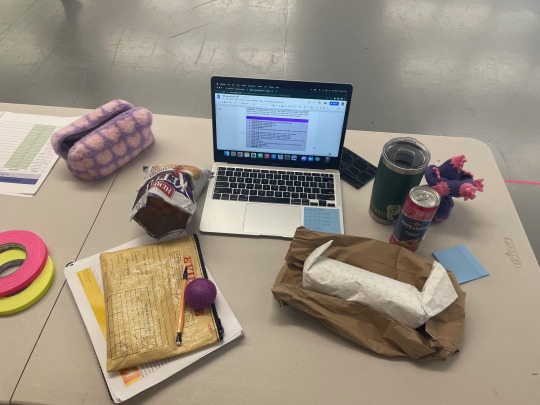Text
Melodrama in Theatre
A melodrama is a work (usually dramatic) that uses exaggerated characters, events, and plot in order to get a strong emotional reaction from the people in the audience. Before the realism movement, melodrama was one of the most prevalent forms of storytelling on the stage: many operas and operettas are melodramas because of their overdramatic and expressive nature.
Characters in melodramas are often given specific stereotypes and archetypal roles: the sensitive hero, the mean villain, the persecuted heroine, the clown, the faithful friend, and the villains accomplice are all common stereotypes found in melodramas.
The dialogue found in melodramas is typically verbose and wordy with flowery and sentimental language used to get a reaction from audience members, focusing less on action and more on sentimentality. Conflicts found in melodrama typically focus and revolve around love, home life, family issues, and marriage with an outside source often serving as the catalyst for the conflict; whether it's a stereotypical aristocratic villain or a temptress.
#uarts#university of the arts#exploration of style#theatre#theatre style#style#fadi skeiker#melodrama
0 notes
Text
Installation - Realism

Realism is a movement in theatre that strives to be as realistic and as close to life as possible. It began as a way to include political philosophy, evolution, and human observation into a scene dominated by melodramas. The movement began with the purpose to better mankind as opposed to simply be entertaining. By using realistic and natural language, minimal spectacle, and usually simple lighting, realism was able to become a direct observation of human behavior on a stage. The goal of this theatre movement was to create a snapshot of real life; a look into something that could actually happen to someone, only in a theatre setting. Much of the time, the plots of these plays were day-to-day moments and ordinary scenarios that most audience members could personally relate to, whether it was something similar to the events of their own lives or the lives around them. Other movements and subsequent styles eventually sprung from the works of realism, like naturalism and independent theatre. Though these are fairly similar to realism, they are different in the fundamentals that make them up. Examples of this style include Ghosts by Henrik Ibsen and many of Anton Chekhov's works. In modern entertainment, many films and television shows have adopted the style of realism.
My installation is made up of everything that I use in my space as a stage manager. I set everything up as early as I could before a rehearsal and left it for people to observe. Each piece is placed in a way that I would actually place it were I truly there and working. I tried to make it as close to my actual setup as possible while also making it look nice and especially organized in the way that realism tends to shape realistic scenarios into a piece of art.
#university of the arts#uarts#exploration of style#style#realism#theatre#theatre style#installation#fadi#fadi skeiker
0 notes
Text
Installation - My Personal Style

I honestly don't know how to describe my personal style. It's something I've been trying to figure out for a very long time. I've gone through phases that were super masculine and phases that were super feminine. Now I like to think that I'm somewhere in the middle.
I like spooky, strange things like tarot and all kinds of dark art. But I also love soft, pretty things like lace and jewelry. I think that my personal style lies somewhere around in between strange and pretty.
Thinking of words to describe it, I would probably have to say witchy, maximalistic, flowy, and goth.
0 notes
Text
Cats. The Musical. It's good.
Listen. I could sit here and type for hours about why I love Cats the Musical. But I only have 10 minutes to type this so. Here we go.
Cats follows a group of Jellicle Cats who have gathered for the Jellicle Ball in order to decide who gets to pass on to the Heaviside Layer. It's based on a collection of poems by TS Elliot and began as a songwriting exercise turned song cycle turned musical by Andrew Lloyd Webber.
Many people have preconceived notions about Cats. Many people who have never seen it before seem to hate it. But I find Cats to be a genuinely charming and just plain fun musical.
With sets and costumes designed by the amazing John Napier, it should be clear going in that an incredible amount of care and time and dedication went into designing this show. Each cat has their own name, their own unique costume, and even their own way of dancing. The costumes are all different but uniform in how they are designed: a painted bodysuit, a tail wrapped around the waist, furry leg warmers, and a wig of fluff and fur and ears. The set is all blown up big versions of normal sized things. The entire show is simply fun and entertaining. I cannot stress how happy that makes me. Sometimes theatre takes itself a bit too seriously--it's stuffy, it's dramatic, it's too much. But the thing I love so much about Cats is that it's just hilariously absurd and entertaining and fun. No other show compares to the beautiful detail of every single design element of Cats. There was clearly so much care and time that went into the making of this show and I absolutely love it.
#UArts#University of the Arts#theatre#style#exploration of style#Cats#Andrew Lloyd Webber#Cats the musical#not the movie
5 notes
·
View notes